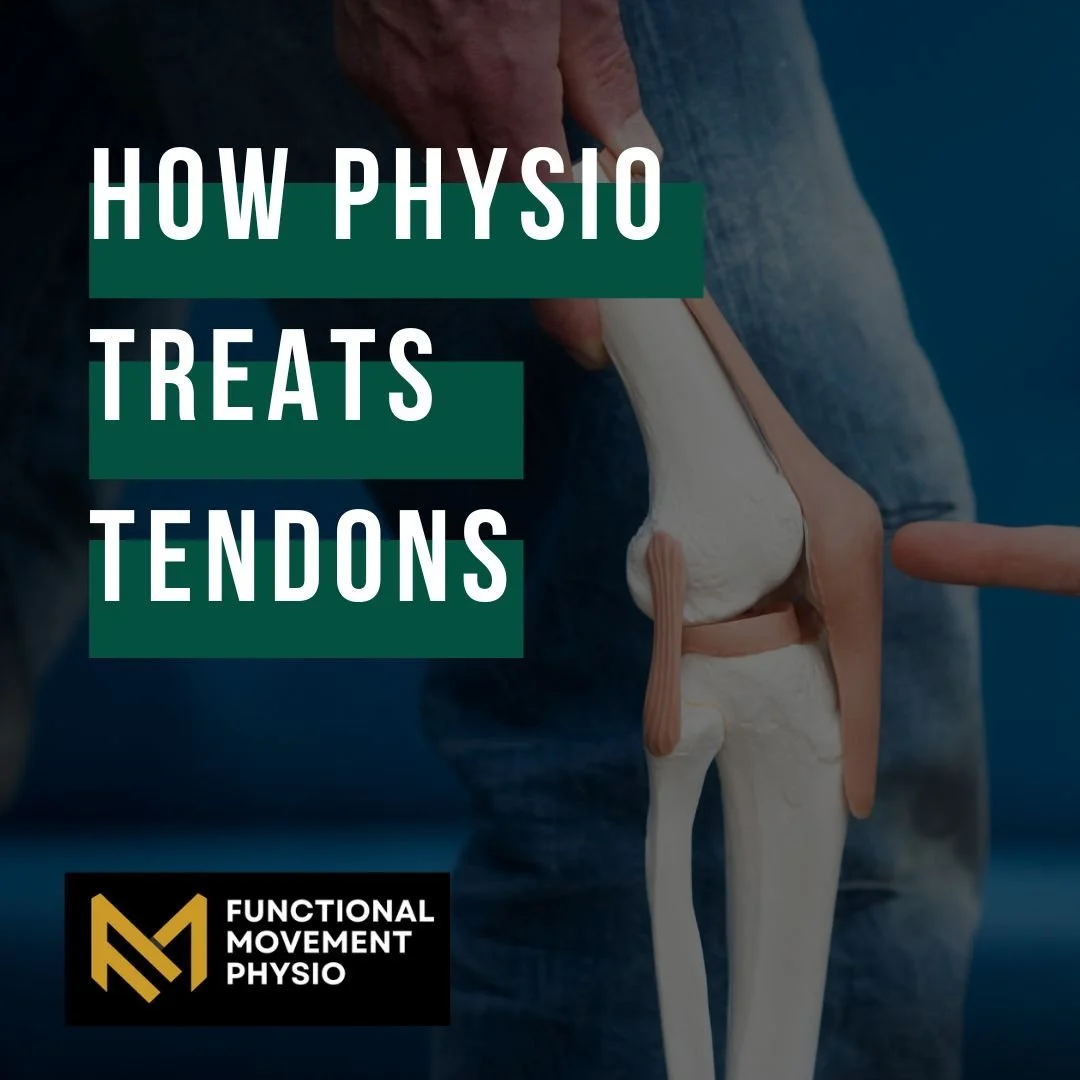Tendon trouble? How physiotherapy treats tendinopathy and overuse injuries
How physiotherapy treats tendon pain
Introduction
A dull ache in your knee after a run. A sharp sting in your elbow during a workout. A stiff heel every morning that eases-but never fully settles.
If this sounds familiar, you could be dealing with tendinopathy-a common overuse injury that affects active people of all ages.
At Functional Movement Physio in Liverpool City Centre, we treat tendon injuries every week. Whether you’re a runner, lifter, tennis player, or just love walking the dog, we help you reduce pain, restore strength, and get back to moving confidently again.
In this guide, we’ll explore:
What tendinopathy is and how it happens
Why rest alone doesn’t fix tendon pain
How physiotherapy speeds up recovery
What your treatment plan might include
Tips to prevent flare-ups in the future
Let’s help you understand your tendon better-and how to treat it the right way.
What is tendinopathy?
Tendinopathy refers to a degenerative or overloaded tendon, usually caused by repeated stress without enough recovery. It’s the modern name for what used to be called tendinitis or tendonitis.
Rather than being caused by inflammation, tendinopathy is now known to involve:
Collagen disruption
Reduced load tolerance
Thickening and stiffness
Sometimes small tears if ignored too long
The pain often builds gradually, worsens with activity, and may ease with rest-only to return again.
Common types of tendinopathy
Some of the most frequently seen tendon issues include:
Achilles tendinopathy (back of ankle/heel)
Patellar tendinopathy (front of knee – jumper’s knee)
Rotator cuff tendinopathy (shoulder)
Tennis elbow / golfer’s elbow (outer or inner elbow)
Gluteal tendinopathy (outer hip – often felt at night or walking uphill)
Hamstring tendinopathy (high up, near the sit bone)
You don’t need to be an athlete to get a tendon injury. It’s common in anyone who’s active—or has recently increased their load (new gym programme, daily steps, longer runs, etc.).
Why rest alone doesn’t solve tendon pain
Many people try resting tendinopathy -and feel temporary relief. But when they return to activity, the pain flares back up.
That’s because tendons respond best to load - not rest.
Rest may reduce symptoms short term, but without strengthening, the tendon remains weak and vulnerable. The key to recovery is guided, progressive loading through exercise.
How physiotherapy treats tendinopathy
At Functional Movement Physio, we use a structured, evidence-based approach to treat tendon injuries. Here’s what you can expect:
🔹 1. Thorough assessment
We begin by testing:
Which part of the tendon is irritated
What movement patterns might be contributing
Strength deficits or joint stiffness
Stage of tendinopathy (early reactive vs. chronic)
🔹 2. Load management
We help you:
Adjust aggravating activities (not eliminate them entirely)
Use deloads to calm down pain
Reintroduce movement gradually
🔹 3. Progressive loading programme
This is the heart of treatment. Exercises might include:
Isometric holds for pain relief
Slow heavy loading to build tendon strength
Functional drills specific to your sport or daily life
Plyometric or impact work when ready
🔹 4. Manual therapy and adjuncts
We may use:
Soft tissue release to reduce muscle guarding
Dry needling if appropriate
Taping or support during sport or rehab
Shockwave therapy (if indicated)
🔹 5. Return to sport/activity planning
We guide you through:
Milestones to hit before returning
Gradual re-introduction of sport-specific drills
Long-term strategies to avoid future issues
What does recovery look like?
Tendon injuries don’t heal overnight - but with the right approach, progress is steady and measurable.
Typical timelines:
Reactive tendinopathy (early stage): 4-6 weeks
Chronic tendinopathy: 8-12 weeks or more
Return to full sport: depends on loading, consistency, and severity
What matters most is following the plan - and not rushing back to high load too soon.
Client story: Patellar tendon recovery
Lucy, a 33-year-old Liverpool-based netballer, came to us with worsening knee pain that flared after jumping and stair climbing.
Her programme included:
Isometric knee holds to settle pain
Quad and glute strengthening
Gradual reintroduction to plyometric drills
Education on warm-up and load planning
Within 10 weeks, she was back to training pain-free—and stronger than before.
Tips to avoid tendinopathy flare-ups
Don’t increase training load more than 10% per week
Warm up thoroughly before sport or gym work
Add strength work to support joints and muscles
Vary your training (don’t repeat the same session too often)
Seek help early - mild niggles are easier to treat than chronic pain
Quick takeaways
Tendinopathy is a common overuse injury that affects many active people
Rest alone won’t fix it - tendons need smart, progressive loading
Physiotherapy provides a tailored plan to rebuild tendon health
Most people recover fully with guided rehab and consistency
At Functional Movement Physio, we offer expert treatment for all types of tendon pain
FAQs
Is tendinopathy the same as tendinitis?
Not exactly. Tendinitis refers to inflammation; tendinopathy reflects a longer-term issue where the tendon structure and load tolerance are affected.
Can I keep training with tendon pain?
Often yes—but activity may need to be modified. We'll guide you on what’s safe and how to progress.
Should I use ice or heat?
Ice may help with short-term pain. But the priority is rehab and load management.
How long does it take to heal?
Mild cases may settle in a few weeks. Chronic cases need more time - but with consistency, most improve.
Do you treat tendinopathy at your Liverpool clinic?
Yes. We regularly treat Achilles, patellar, shoulder, elbow, and hip tendon issues at Functional Movement Physio in Liverpool City Centre.
Conclusion
Tendinopathy can feel frustrating - but it’s treatable with the right approach. Physiotherapy provides the tools, structure, and support your tendon needs to recover and perform again.
At Functional Movement Physio in Liverpool City Centre, we’ll guide you through a personalised plan that reduces pain, restores function, and helps you get back to doing what you love.
Think you might have a tendon injury? Book your physiotherapy assessment today.

